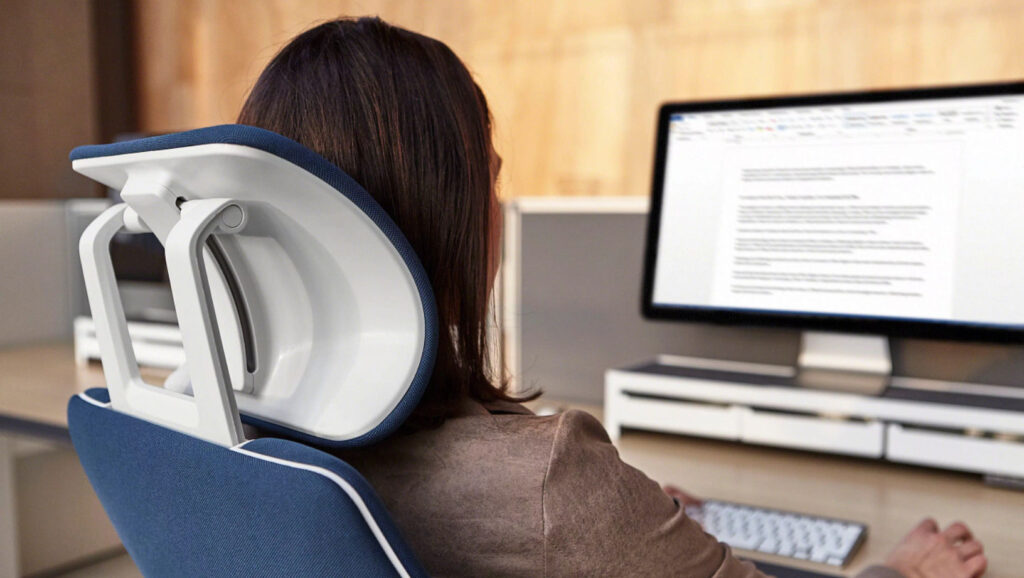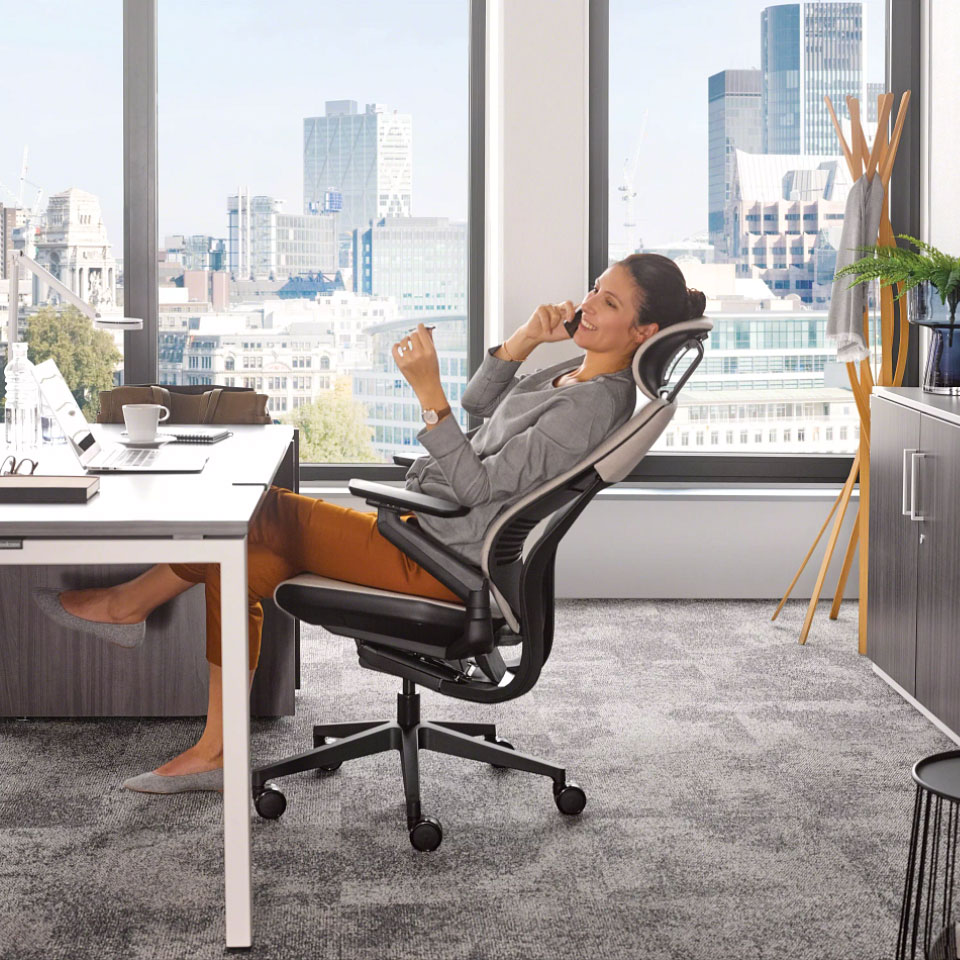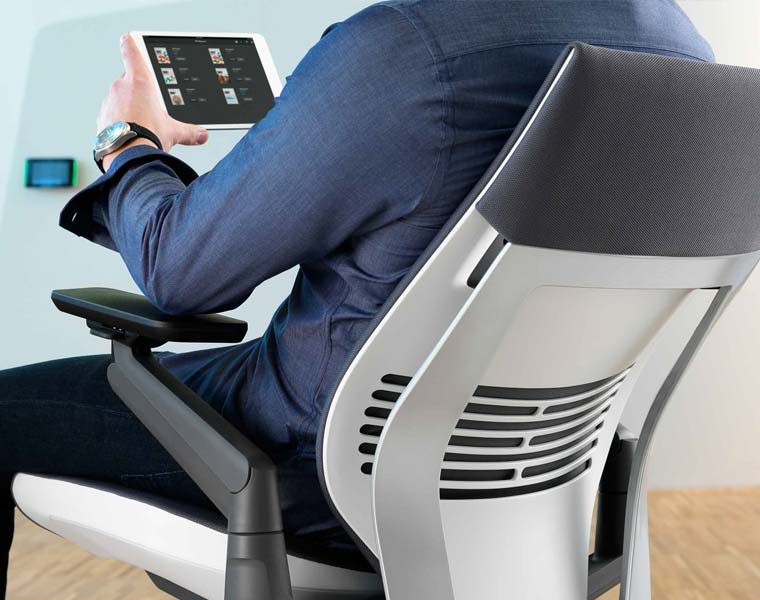In the world of office design, ergonomics is all about making the workspace more convenient, comfortable and inclusive for a diverse workforce.
In the wider sense, ergonomics is about combining engineering, psychology and physiology to support better interaction between humans and their environment.
Before we delve into the nitty-gritty of biomechanics, anthropometry and all that jazz, let’s first further explore the question that we hear time and time again – what is ergonomic office design?

What does ergonomic design mean?
In a nutshell, ergonomic design involves adapting the workspace to suit the needs and activities of those using it. No longer do humans have to work around the design – design should now support and facilitate the activities and requirements of those using it.
Basically, things like the configuration of a workspace and the office furniture in it should be designed and chosen ergonomically, i.e. with the comfort and convenience of the user as a top priority.
In 1717, Italian physician Bernardino Ramazzini published The Disease of Workers. This book explored the links between various common work tasks of the era and cumulative trauma disorders.
So, we aren’t dealing with a new issue here – workplace ergonomics have always been a key consideration. In fact, user-centric design can be traced right back to the Stone Age when our ancestor’s ancestors were creating functional hand tools for cutting wood and hunting.
However, over the decades, solutions to these problems have evolved and advanced significantly – but why is ergonomic design so important? Let’s explore.

The benefits of office ergonomics
Fostering a comfortable, functional and inclusive working environment is no longer a luxury or a second thought – it should be a top priority.
Considering ergonomics is a critical part to achieving this, with the main benefits being:
Focus and productivity
The physical condition of workers has a huge impact on productivity levels. Similarly, the mental state of workers has a direct influence on cognitive function and the ability to concentrate.
So, in order for people to perform to their full potential, they need to be comfortable in their working environment and feel supported by their physical surroundings.
As Martin Helander points out in his book A Guide to Human Factors and Ergonomics, ergonomic design is rarely just the end objective – it is also the means by which employers can improve associated factors such as workplace safety and productivity.
Employee retention
A workforce that is happy, healthy and feels supported (physically, emotionally and culturally) is one that will stay loyal for longer. That’s why ergonomics can have such a positive impact on your staff turnover.
If somebody doesn’t enjoy their physical working environment or feels that their employer isn’t facilitating their needs, they’re more likely to look at different roles much sooner.

Supporting physical health
The repetitive strain injuries that Ramazzini shone the spotlight on as early as 1717 are still common work-related injuries today. Many of these can be addressed—or even potentially completely resolved—through ergonomic design.
Research carried out by Solutions Training found that:
- 477,000 workers suffer from work-related musculoskeletal disorders.
- 7.3 million working days were lost in 2021/22 due to work-related musculoskeletal disorders.
- The back (42%), upper limbs and neck (37%) and lower limbs (21%) were the main problem areas.
Incorporating ergonomic elements into your next office refurbishment will not only reduce discomfort for employees and boost productivity in the workplace, it will also minimise risk and injury costs for business owners and employers.
Tackling ‘tech neck’
Modern technology is arguably the main catalyst of increased efforts to implement a more ergonomic way of working with the rise of problems like ‘tech neck’.
Steelcase found that 45% of workers use three different devices throughout the day (laptop, tablet and smartphone) and 13% use four.
Following the launch of the iPad back in 2010, Steelcase ran a study and discovered 30 different human postures, 9 of which were new postures evolved on account of modern tech and new devices. Findings that are still relevant in commercial design today.

A lack of furniture to facilitate these new and varied lines of vision and device usage is causing the phenomenon known as ‘tech neck’ (or ‘text neck’).
This is due to poor spinal alignment as a result of heads being bent into a forward-down position for long periods of time with no adequate support.
Ways to combat tech neck through ergonomics alone include:
- Sitting at a 20-30° angle and using a chair that supports this recline.
- Furniture with high-quality and intuitive lumbar support.
- Height-adjustable desks and multi-level seating.
How we sit is as important as how long we sit for
Encouraging employees to lead a less sedentary lifestyle is essential for overall health and performance. More movement is key to optimum cardiovascular health but also creativity and concentration.
That said, it’s time to stop seeing sitting as the enemy all of the time. Instead, we need to look at how we are sitting and the postures we assume, and how this impacts our physical health, mental wellbeing and ability to perform productively.

How to make an office more ergonomic
Below are some of the most effective ways to make your working environment more ergonomic.
Ergonomically-designed office furniture
Experts like physiotherapist and ergonomist, Jan Tissing argue that workspace design today – office chairs in particular – aren’t keeping up with these varied new ways of consuming technology.
For example: traditional office chairs force the spine into a C-shape, rather than its natural S-shape, which puts pressure on the spinal discs and can also impact internal organs.
Furniture that has been purposely designed to provide ergonomic credentials target and alleviate these issues. Making a conscious effort to incorporate more of these kinds of designs into your office furniture portfolio is essential.
Consider measurements and freedom of movement
When choosing your office furniture, prioritise products that permit unrestricted natural movement where possible. This will help support a wider range of working postures throughout the day to help reduce things like musculoskeletal pain, poor focus and fatigue.
- Furniture on castor wheels
- Multi-level seating
- A combination of soft and hard seating
- Height-adjustable furniture and screens
These are all great examples of how to support more versatility of movement in the workplace.

You should also consider the measurements and proportions of the human body as well as how it moves – the technical term for this scientific study of these biomechanics is ‘anthropometry’.
Anthropometry measures things like:
- Functional overhead reach to figure out the maximum height of overhead controls.
- Sitting elbow height to calculate optimum desk height.
- Seated eye height to determine the ideal position of monitors, screens and other visual displays.
Lighting and height-adjustable screens
Ergonomic workspace design isn’t all about furniture – it’s also about visual and audio elements too. Traditional strip lighting found in offices of bygone eras, for example, was harsh on the eyes and often reflected off computer screens causing eye strain and headaches.
These days, office lighting has become a lot more diverse, ergonomic and more considerate of visual sensitivities.
An ergonomic approach to workplace lighting, along with ergonomic desktop mounts to aid screen height adjustment, will also improve both the comfort and performance of your staff.

Know your ABCs of office acoustics
Creating a comfortable level of noise within the workspace is a lesser-known element of ergonomic office design but one that is equally important.
Excess noise can be distracting and frustrating and disrupt effective communication within the workplace.
When you’ve finished here, head over to our blog about the ABCs of office acoustics to learn more about how you can use the Absorb, Block and Cover techniques to foster a comfortable environment that supports creativity, motivation and concentration.
Planning to refurbish your office and incorporate more ergonomic elements? Get in touch to find out more about how our team can help, from furniture consultancy to financing.




